Choosing a sofa can be VERY overwhelming. There are so many options, and unless you know what you are looking for, choosing something that doesn’t quite fit your space and your needs can be an easy misstep. We’ve rounded up our best tips for choosing the right sofa for your home. These tips will help you pick a sofa with confidence, from the overall size to the correct measurements for comfort!
How to Choose the Right Size Sofa for the Space
Dimensions
While shopping for your sofa, make a note of all the dimensions. You will want to use these to decide if the sofa will work in your home.
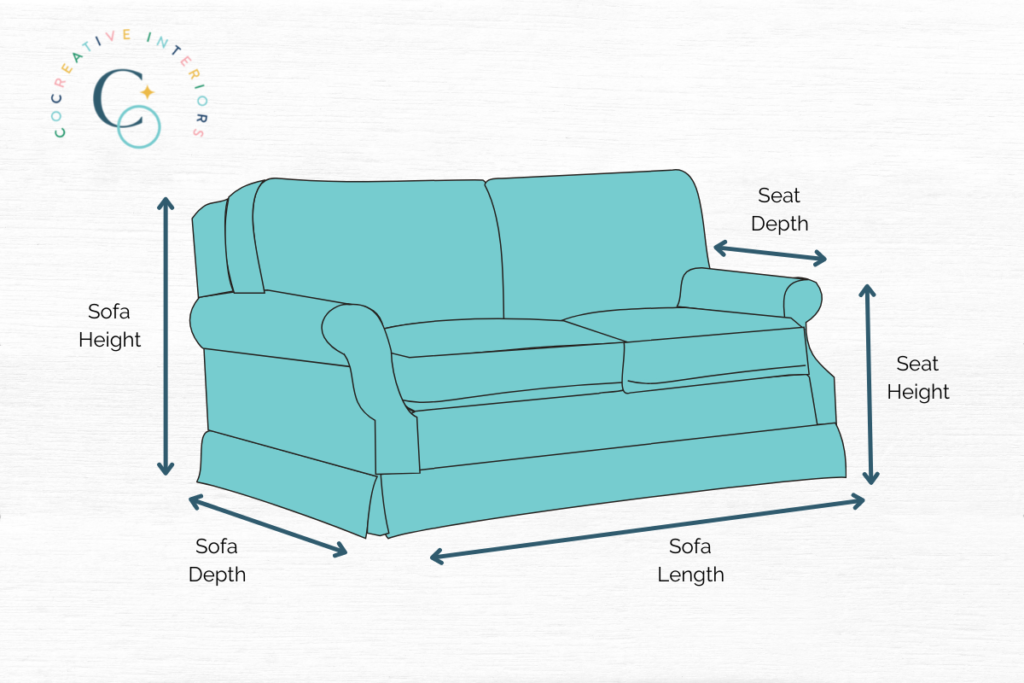
The dimensions you want to measure are:
- Sofa Length: The most common length of a three-person sofa is 84″, but can range from 70″ to 96″. There are also extra-long options that can be over 100″.
- Sofa Depth: Depth is the measurement from the front to the back of the sofa. The standard overall depth is 35″ but can range from 32″ -40″.
- Sofa Height: Height is the distance from the floor to the top of the back of the sofa. It usually ranges from 26″ -36″.
- Seat Depth: The measurement from the front of the cushion to the back. The average seat depth of a sofa is 21″ -24″. A shorter seat depth is generally for more formal seating, such as a sitting room. The deeper seat depths are perfect for places you plan to lounge or sit with your feet tucked underneath. Deeper seat depths are ideal for family rooms or media rooms where people are more relaxed.
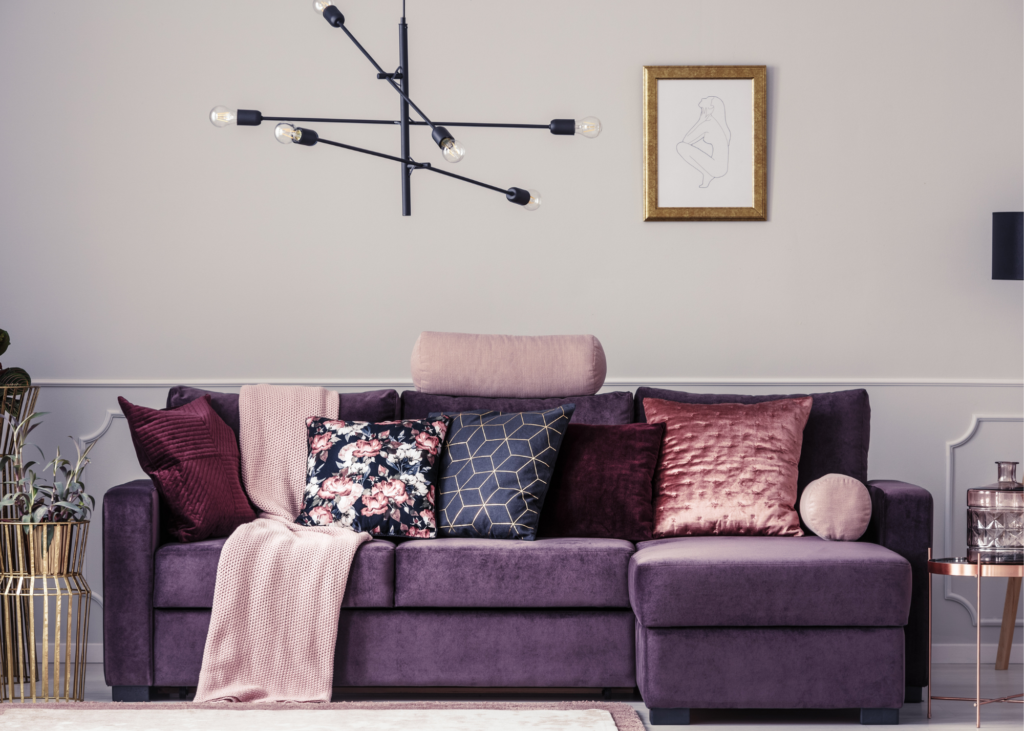
Cushion Choices
Types of Cushions: There are two types of cushions to choose from when purchasing a sofa. Fixed or loose. Fixed means they are attached to the sofa and cannot be removed. Loose means that they can be removed as they are upholstered separately.
Many cushion styles are available based on your taste and how you will use your sofa.
- A box cushion is just as it sounds; the filling is surrounded by a top and bottom panel and four side panels. This style is structured and looks more formal.
- A bench seat is a single continuous cushion that is the length of the seating area. It can be loose or fixed and has a modern vibe.
- A knife-edge cushion is when the front and back panel is connected by a single seam, like a pillowcase. These are typical as the back cushions on a sofa, and the seam can have decorative piping or trim for extra style.
- J, L, and T cushions receive their names from their shape. J & L cushions wrap around the arms of the sofa, and a T cushion is a bench cushion that wraps around both arms of the sofa.
- A waterfall cushion is created by wrapping the panels around the filling without any seam interruption, and it is sealed with the two side panels.
- Density: The density of the foam used to create the cushion determines how firm or soft your sofa feels. If you want a firmer sofa, look for a higher density number.
Not all sofa fills are the same. Depending on how you plan to use your sofa, there are many different options to fit your needs. Not only do you choose the type of foam, but you can also find wraps that increase the comfort and longevity of your sofa.
- Foam is the most common type of filling. Common types are high density, low density, and memory foam.
- Dacron wrap is a lining made from polyester that goes around the foam cushion. The purpose is to fill any gaps, and it increases the longevity of the seat fabric.
- Feather or down wraps add an extra layer of squishy-ness that creates that comfy sinking feeling while you are still supported by the interior cushion.
Room Size
Before you purchase, you should know what size would be best for your space. A good rule of thumb is that the larger the room, the bigger the sofa you can choose. A big room with high ceilings needs a grand sofa that takes up space. A smaller room with lower ceilings needs something more compact. A too big or small sofa can create strange proportions that throw off your entire room. Once you have selected a few options, tape off the space to ensure you have 30 inches of space in front for easy walking. You also want 12-18 inches of space between other pieces of furniture, such as your coffee table or ottoman, so the space doesn’t feel overcrowded.
Measure for All Uses
Are you looking for a sofa that also has a fold-out bed? Or a modular sectional that can be rearranged based on needs? You want to measure your space for all uses. A sofa bed is not very useful if you cannot fully unfold the bed. Take some time and map out all uses for the sofa and tape off those dimensions in your room so you can visualize if the piece will work in your space.
How to Choose the Right Sofa for Comfort
After determining the right size sofa for your space, you need to choose the right sofa for comfort. Depending on the room’s function, you will want to choose a sofa that will fit your needs. A family room needs a very different sofa than a formal living room.
When making your choice, consider the following dimensions:
Seat Height
Seat height is the measurement from the floor to the top of the seat cushion. Most sofa seat height measurements fall in the 15” to 20” range when measured from the floor to the top of the seat cushion, putting the sofa seat 17-18” off the floor. Your feet should sit squarely on the floor for the most comfortable sofa when your back is against the cushion. So, if you are tall, a taller seat is ideal. For shorter people, a shorter seat height may be more comfortable.
Seat Depth
The seat depth is the distance from the front of the seat cushion to the front of the back cushion. Typically seat depth measures between 20-25”. Deep seats are excellent for lounging on the couch with your legs curled up under you, while shorter seats are perfect for formal living room sofas.
When considering the depth of your sofa, consider that 21”-22” seat depth is perfect for those of average height. Shorter and longer seat depths are more suited for shorter and taller people respectively. Since most people live in a home with people of varying heights, remember you can shorten the seat depth with extra pillows, but you can never add seat depth.
Pillow Height
Pillow height is measured from the floor to the top of the back cushions. This measurement indicates how much back support the sofa will provide. Taller pillow heights will provide support farther up the back, while shorter pillow heights are perfect for those who like to put their arm across the back.
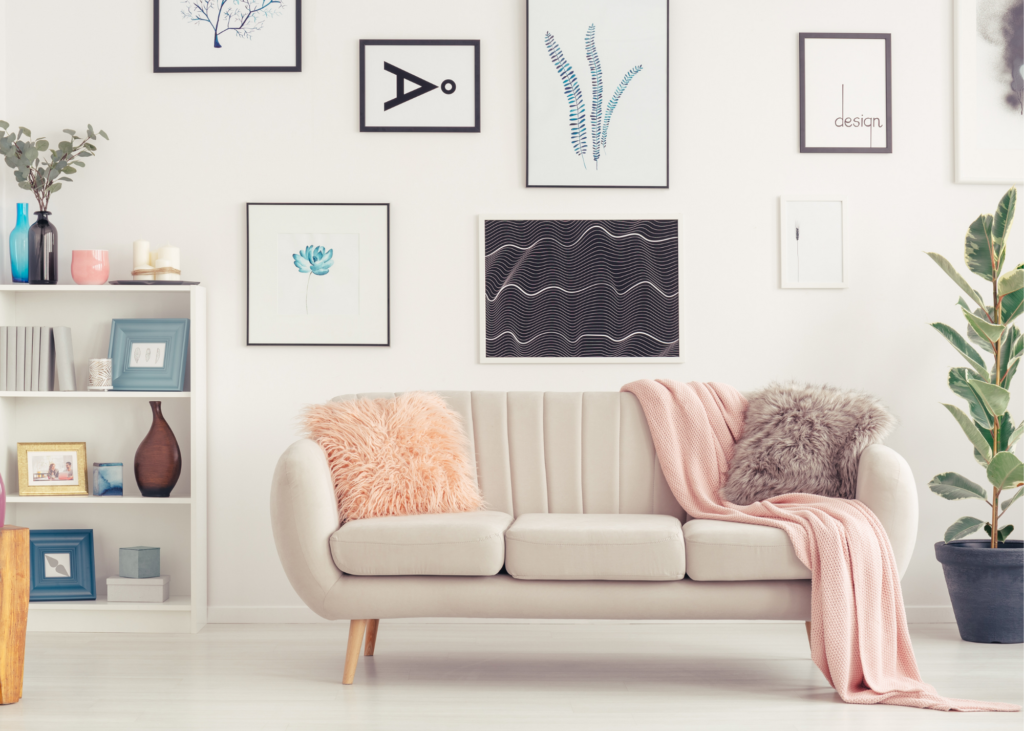
Measure for Delivery
Remember that scene from Friends when they are trying to move a sofa up the stairs? Ross yelling, “PIVOT, PIVOT!” While it made for a funny moment on TV, this is a disaster in real life! Before you finalize your sofa order, make sure that all the areas that the sofa will need to move through are big enough.
- Front Door: Compare the width of the door to the sofa. Some pieces will have removable legs to reduce the size for delivery. If the frame of your entry is larger than the height of the sofa, you should be able to move it in with no issue. If the door does not fit the sofa, do you have other options? French doors? A large window? Often there are other solutions.
- Hallways & Interior Doors: If your living room is not immediately inside your home or you are placing the sofa in an interior or upstairs space, you need to measure all hallways and internal doors you will be moving the sofa through. Measure your hallways’ width and any places where obstacles cannot be moved, such as built-in shelving. If the hallway and interior door measurements are larger than the height of your sofa, there should be no issue moving the sofa into your home.
- Stairways & Landings: Stairways are often the trickiest place for sofa delivery. Stairwells can have landings where you have to pivot and lift the piece, and just being a few inches off can make a delivery next to impossible. Measure the narrowest point of the stairway and the depth, width, and height of any landings to make sure they are larger than the dimensions of your sofa.
- Banister Clearance: If your sofa has to be lifted over a banister, make sure there is enough space between the top of the railing and the ceiling.
Choosing the right sofa is probably just a tiny part of a larger room design; if you need some guidance creating a space you love, get in touch! At CoCreative Interiors, we are happy to help you with a perfect plan for you and the vision you have for your home. Book your complimentary discovery call and let’s get started designing the home of your dreams!

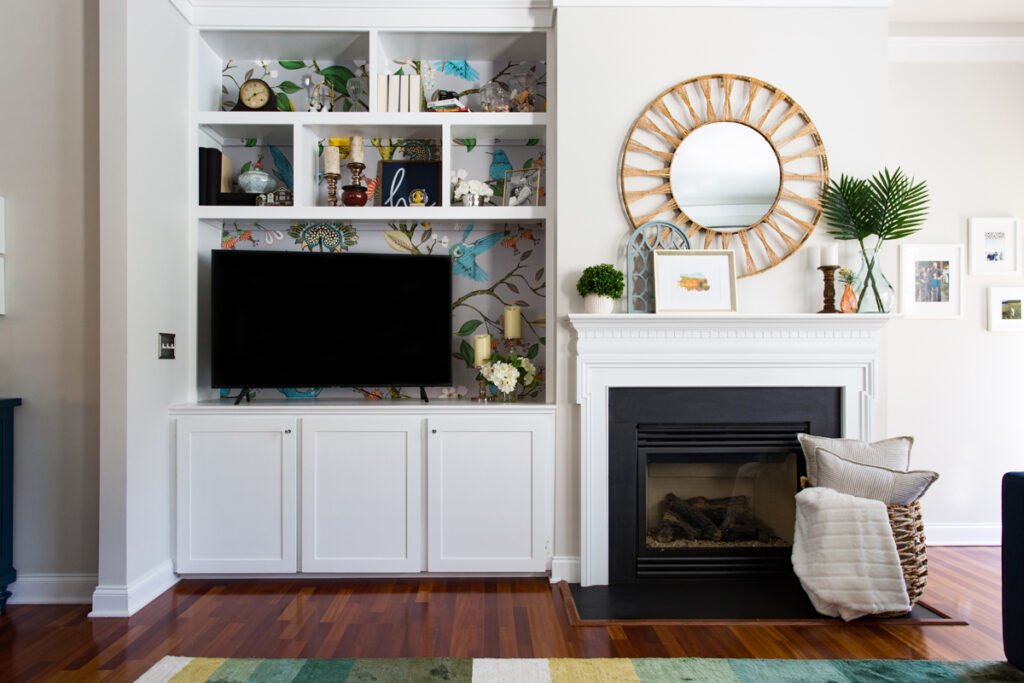
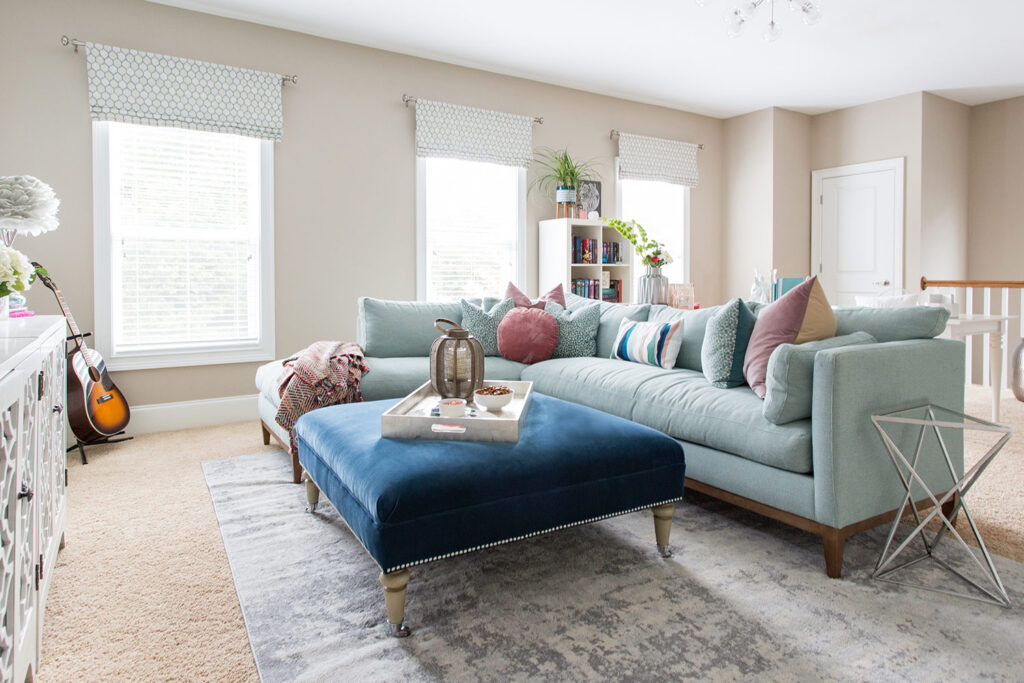
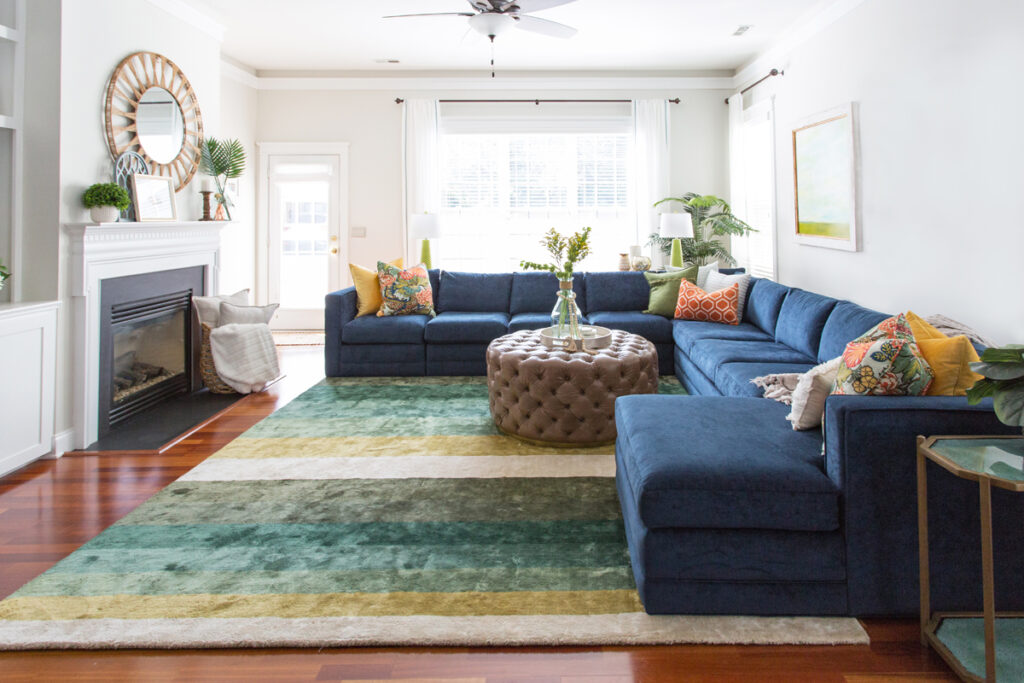



0 Comments